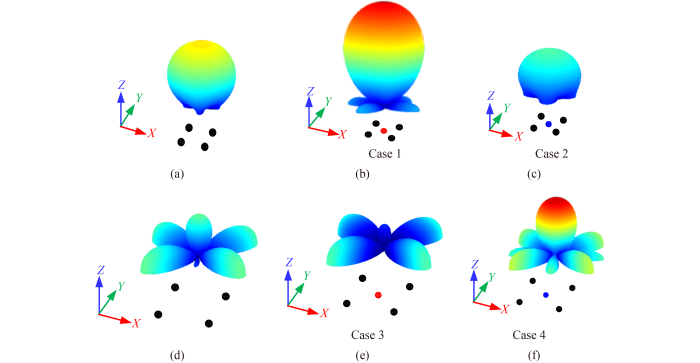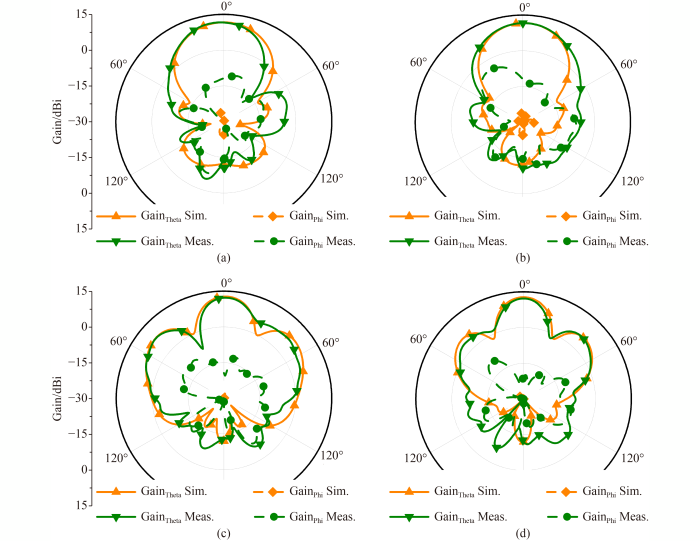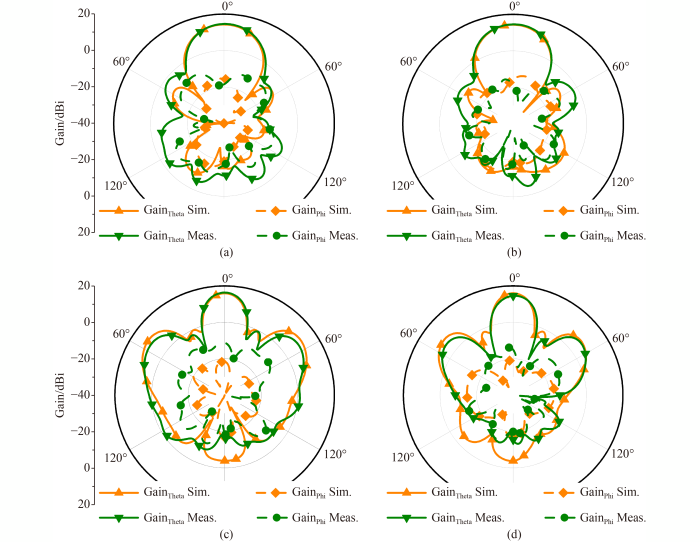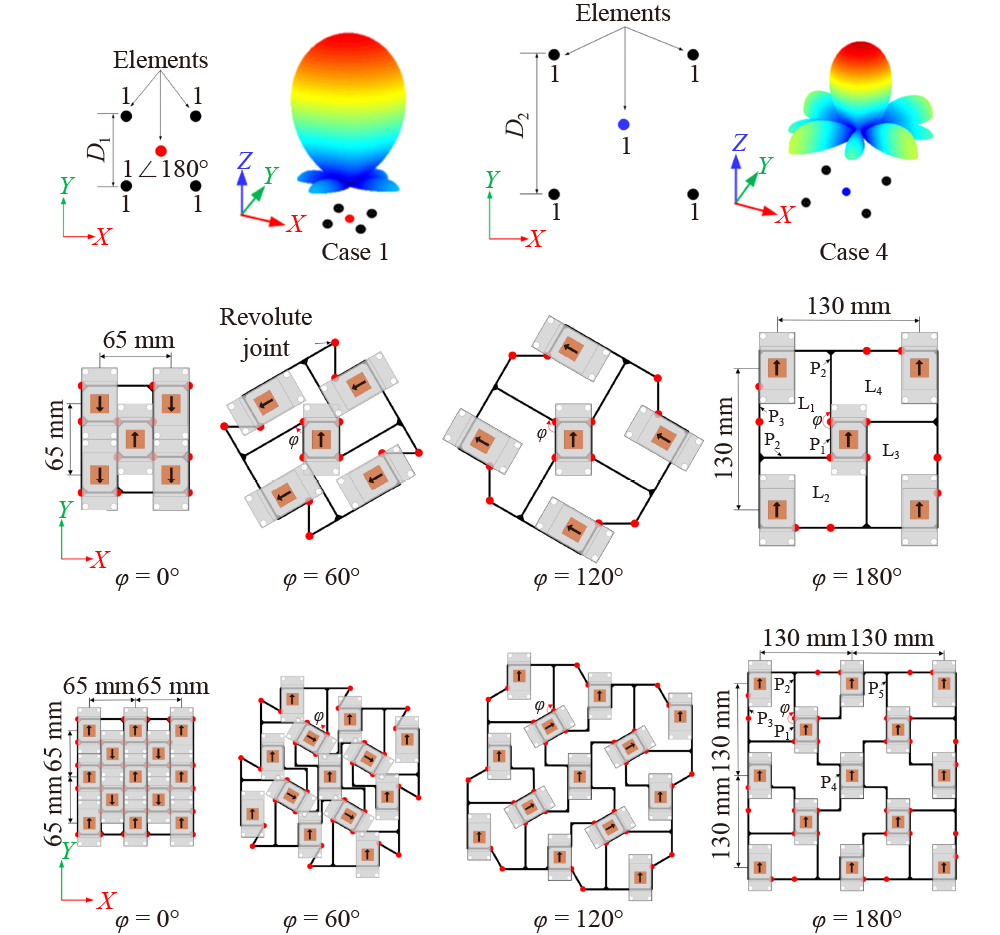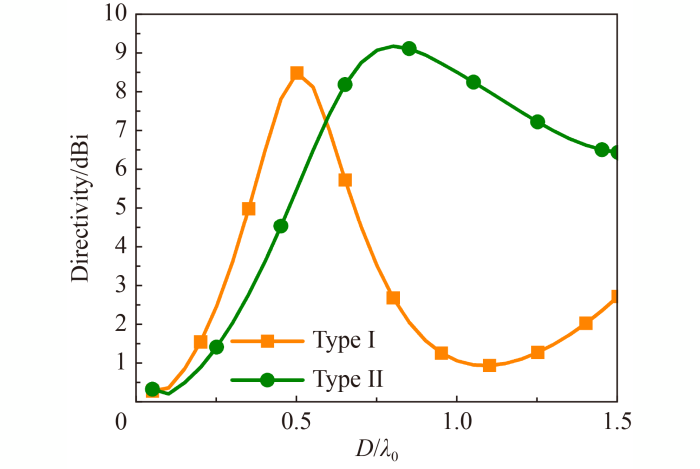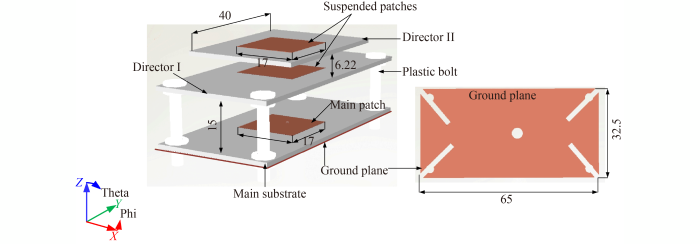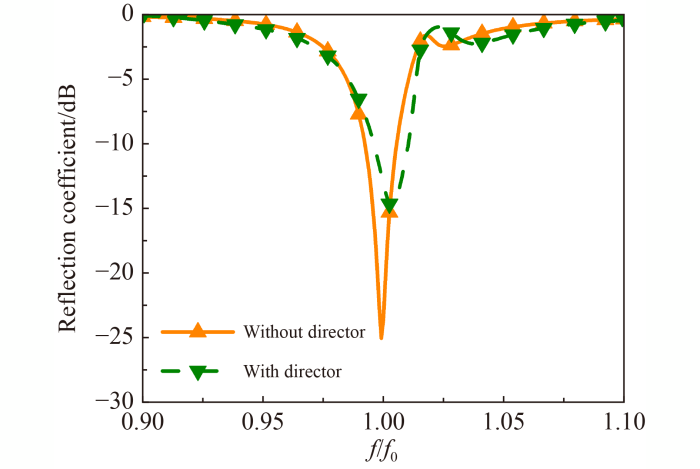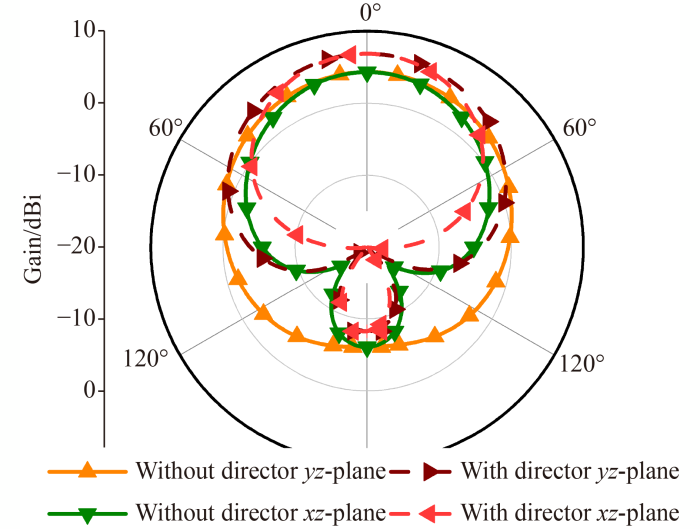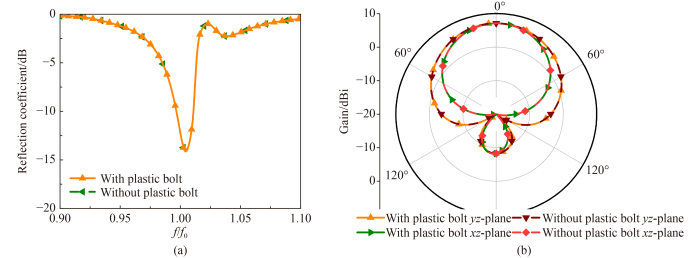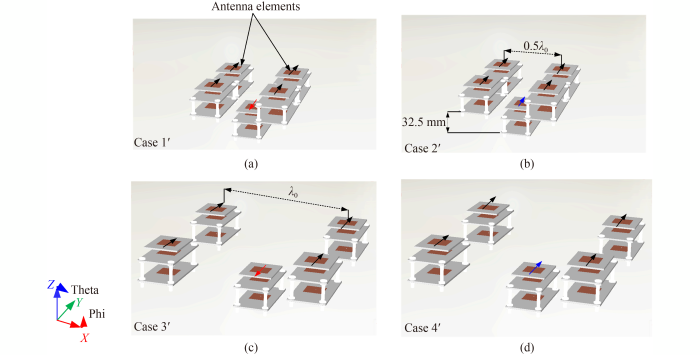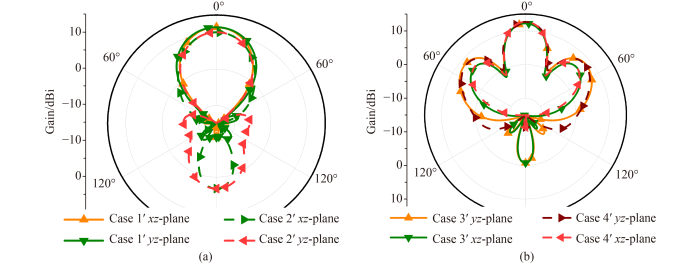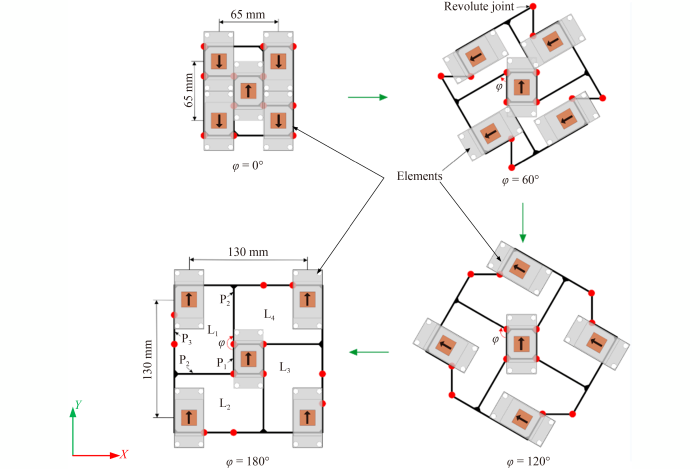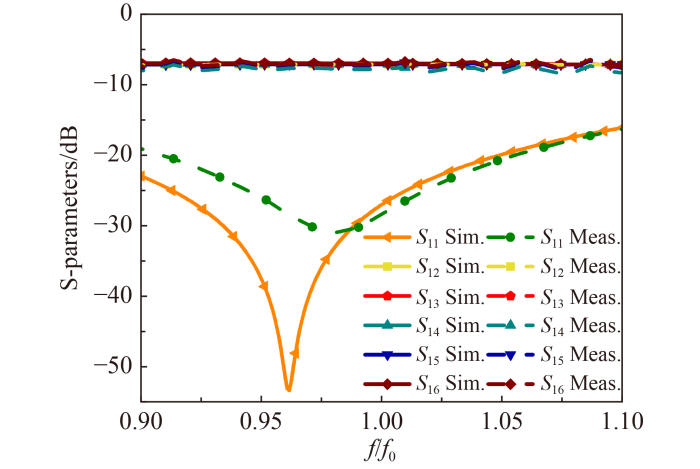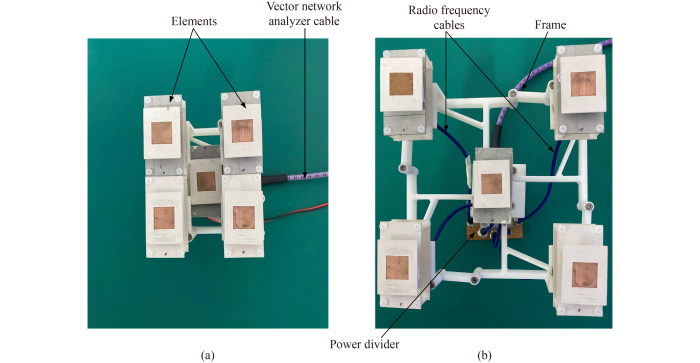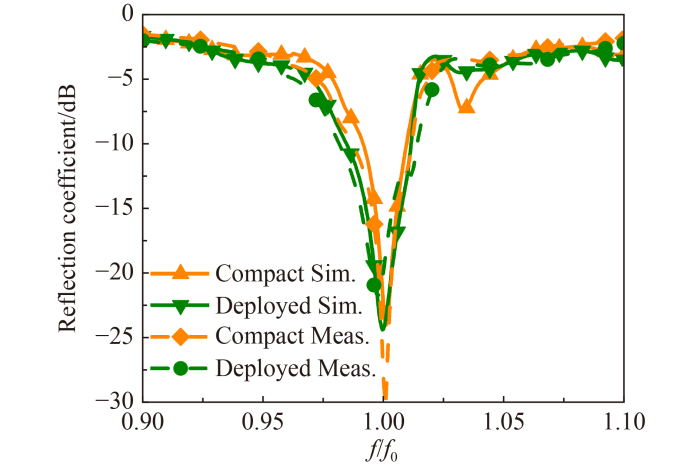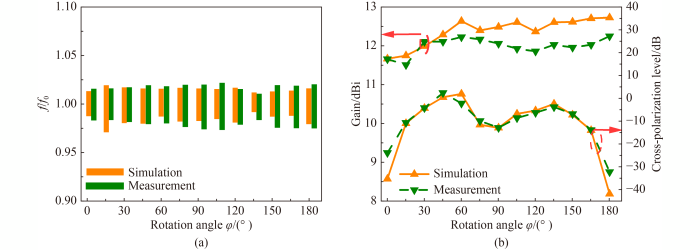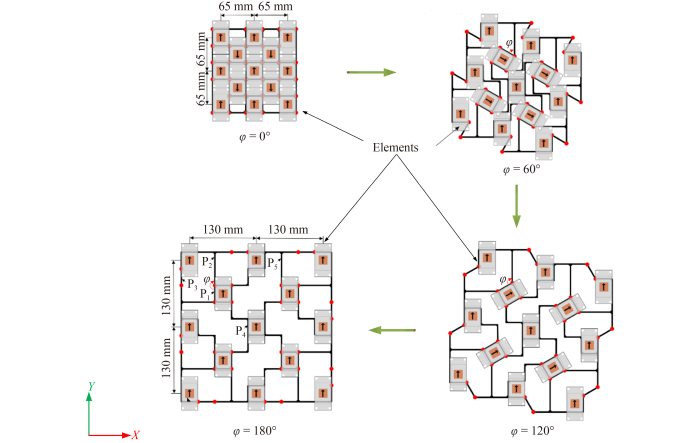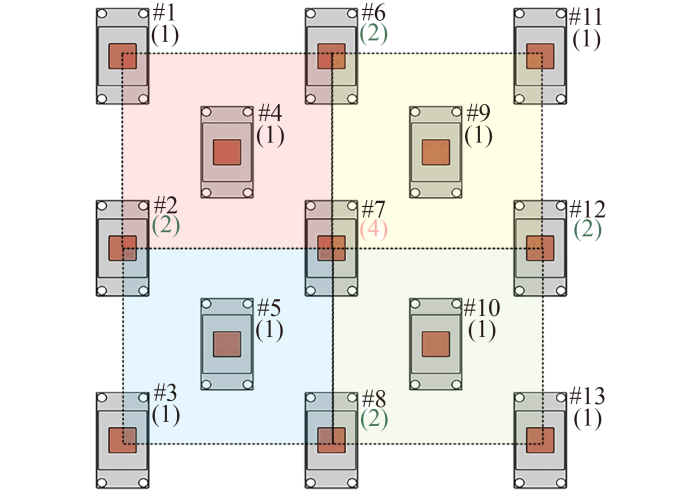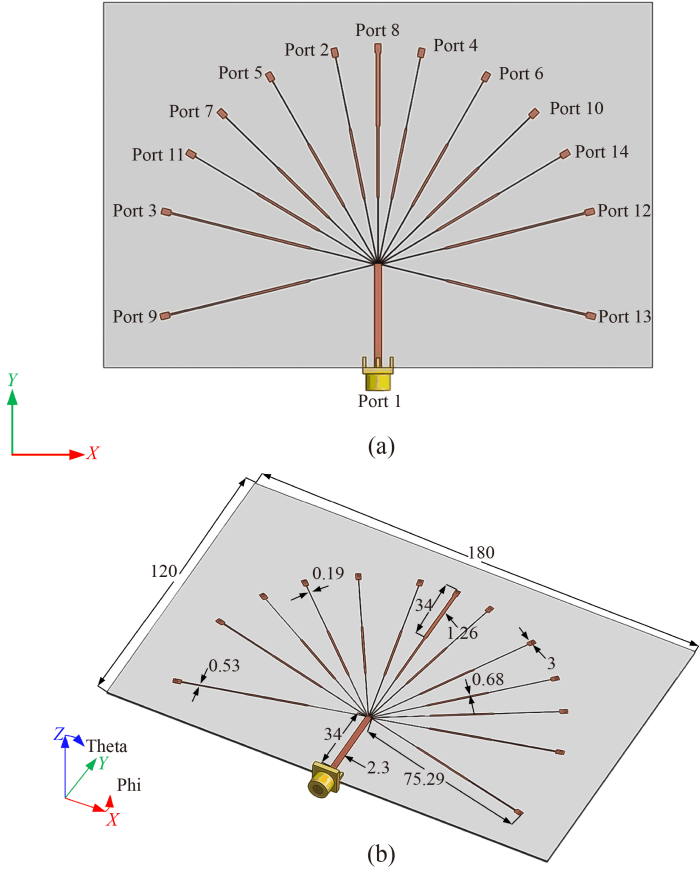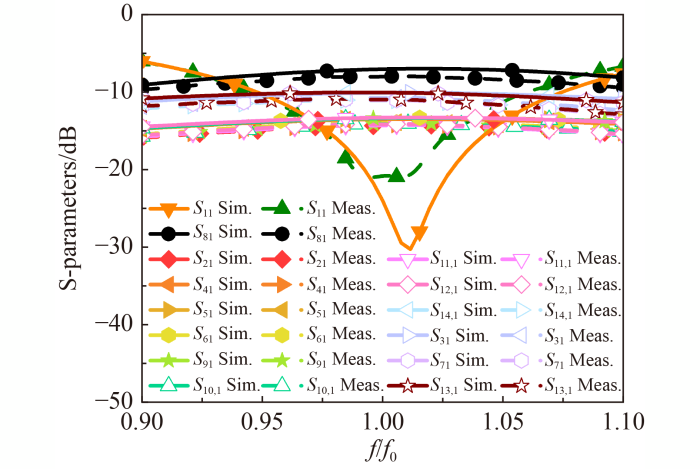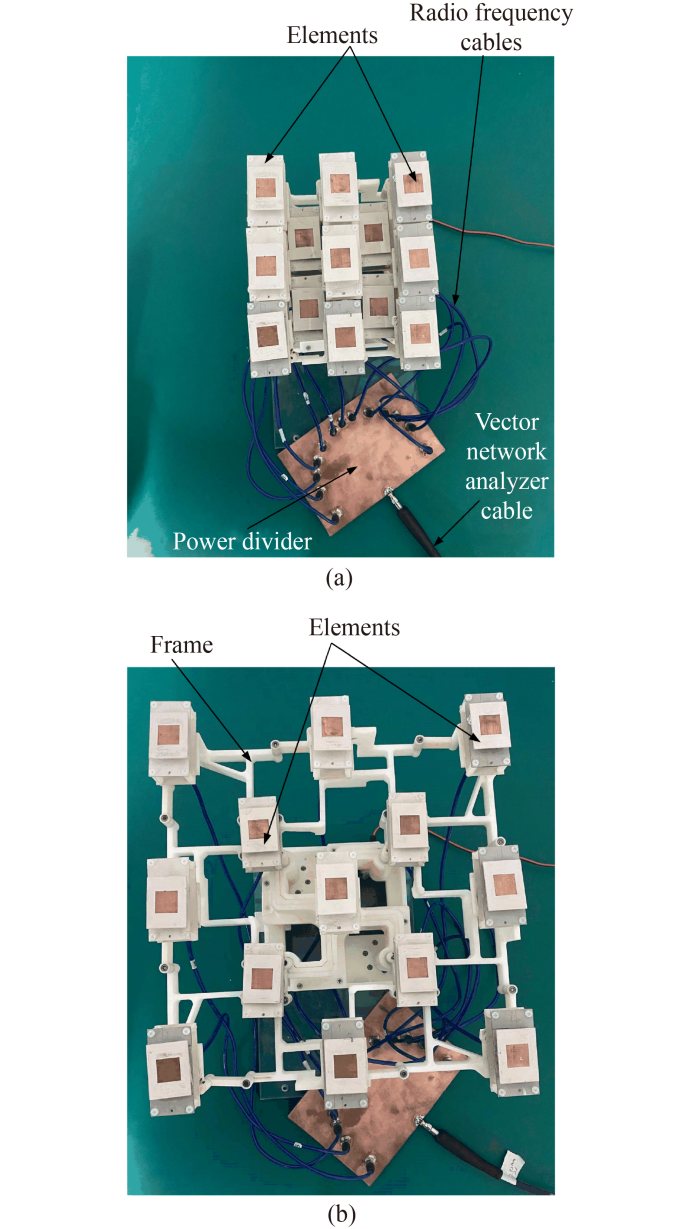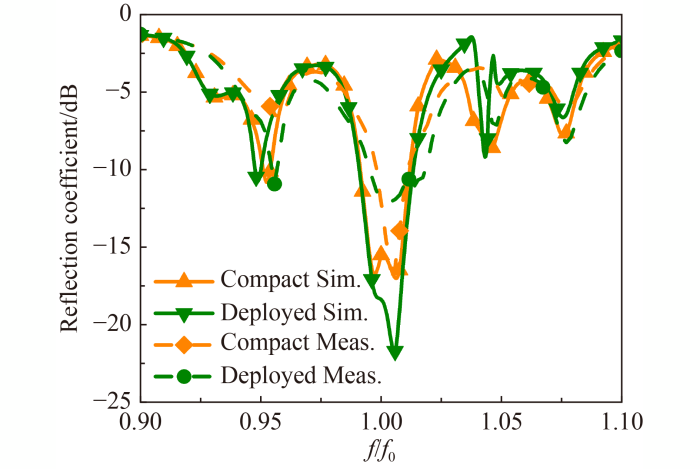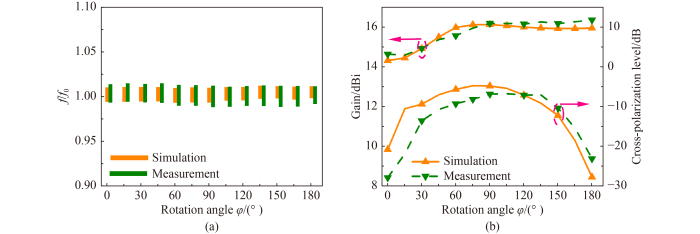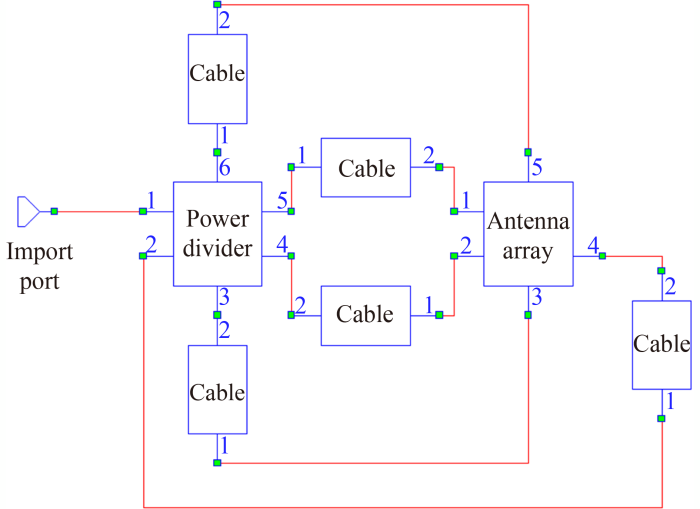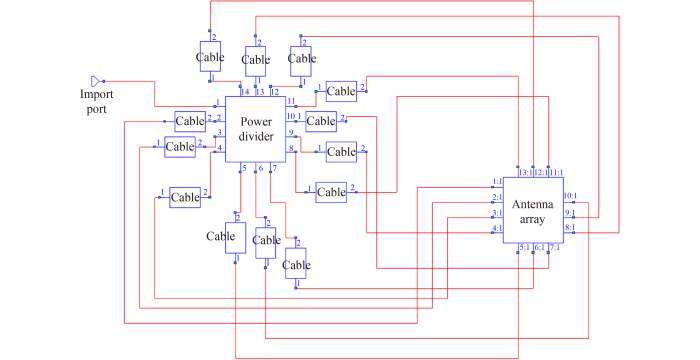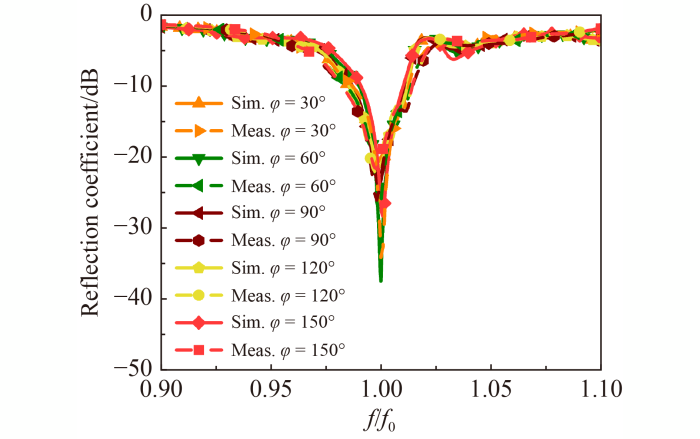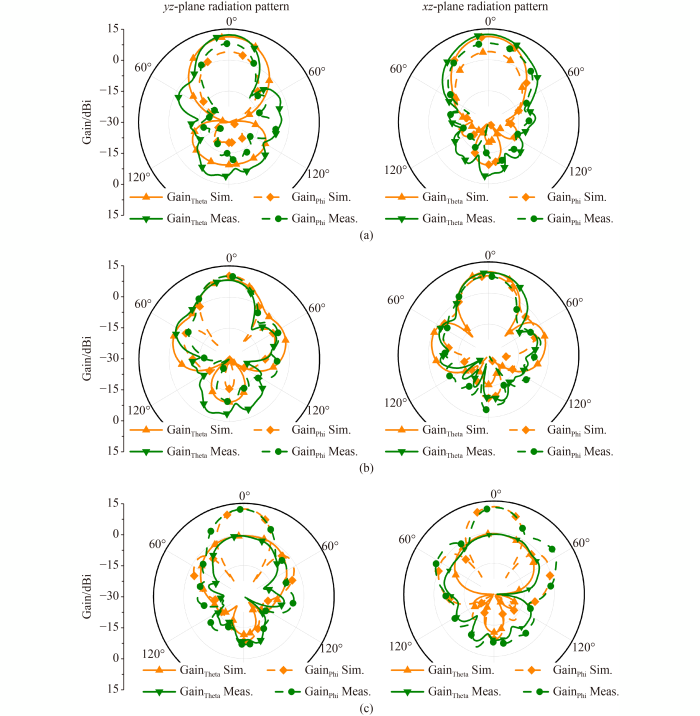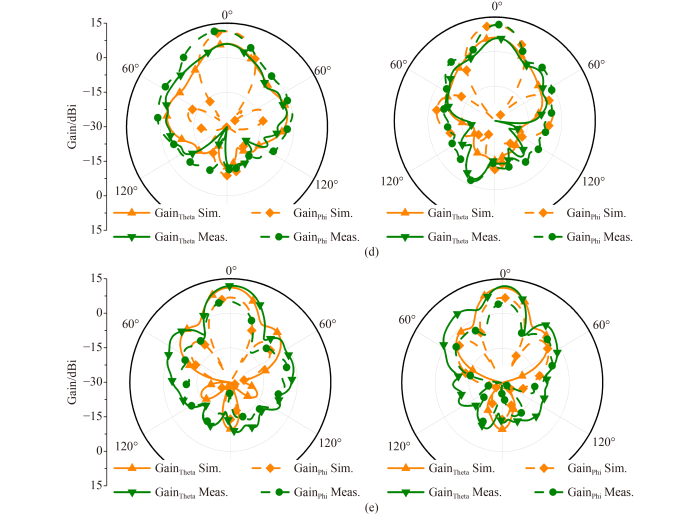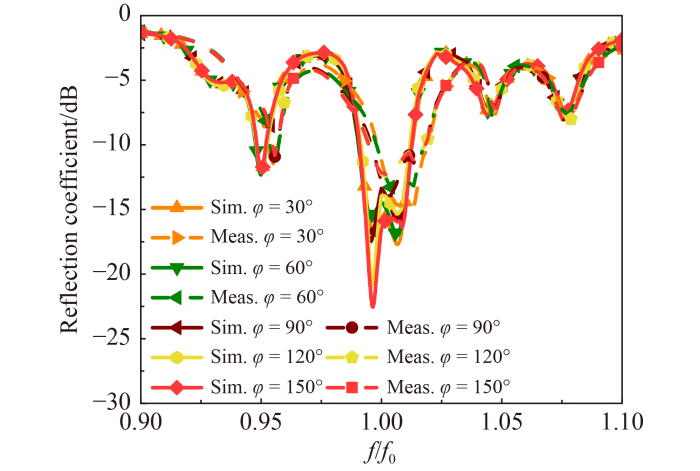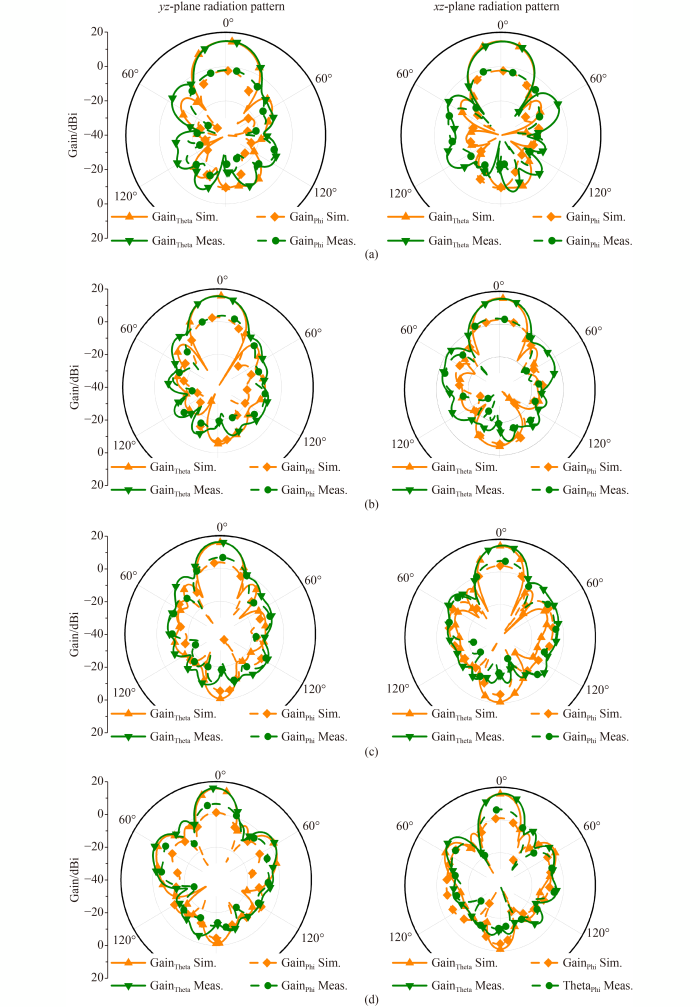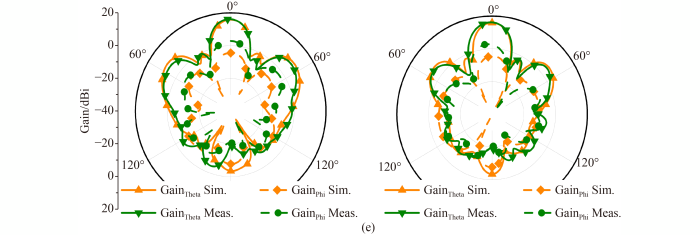In artificial intelligence-driven times, antennas need to be stowed in limited environments before deploying regular operation in some applications, such as CubeSat or in-body detection. In these cases, antennas may be expected with acceptable gain in a compact size and enhanced gain in a deployed size. Therefore, reconfigurability has become an essential and desired feature for antennas to adapt to changing scenarios [
1,
2]. Reconfigurable antennas have been studied in the past three decades. Generally, reconfigurable antennas are classified into three categories: electrically [
3–
12], optically [
13–
15], and mechanically [
16–
37] reconfigurable antennas. With PIN diodes [
3–
5], radio-frequency microelectromechanical systems [
6–
8], or varactors [
9–
12], antenna performances can be reconfigurable in an electric manner. However, additional electrical components increase the system losses. Antenna reconfigurations relying on photoconductive switching elements are called optically reconfigurable antennas [
13–
15]. These reconfigurable systems suffer from high costs due to their optical components. Mechanically reconfigurable antennas are proposed for beam steering [
16–
19], polarization [
20–
22], frequency [
23–
27], or pattern reconfiguration [
22,
28,
29], and reconfigurations are realized without the loss or cost of the electric or optical components. However, the reconfigurable antennas in Refs. [
3–
29] are not aimed at adjusting overall sizes in an extensive range to adapt to various environments changing during the operation.
